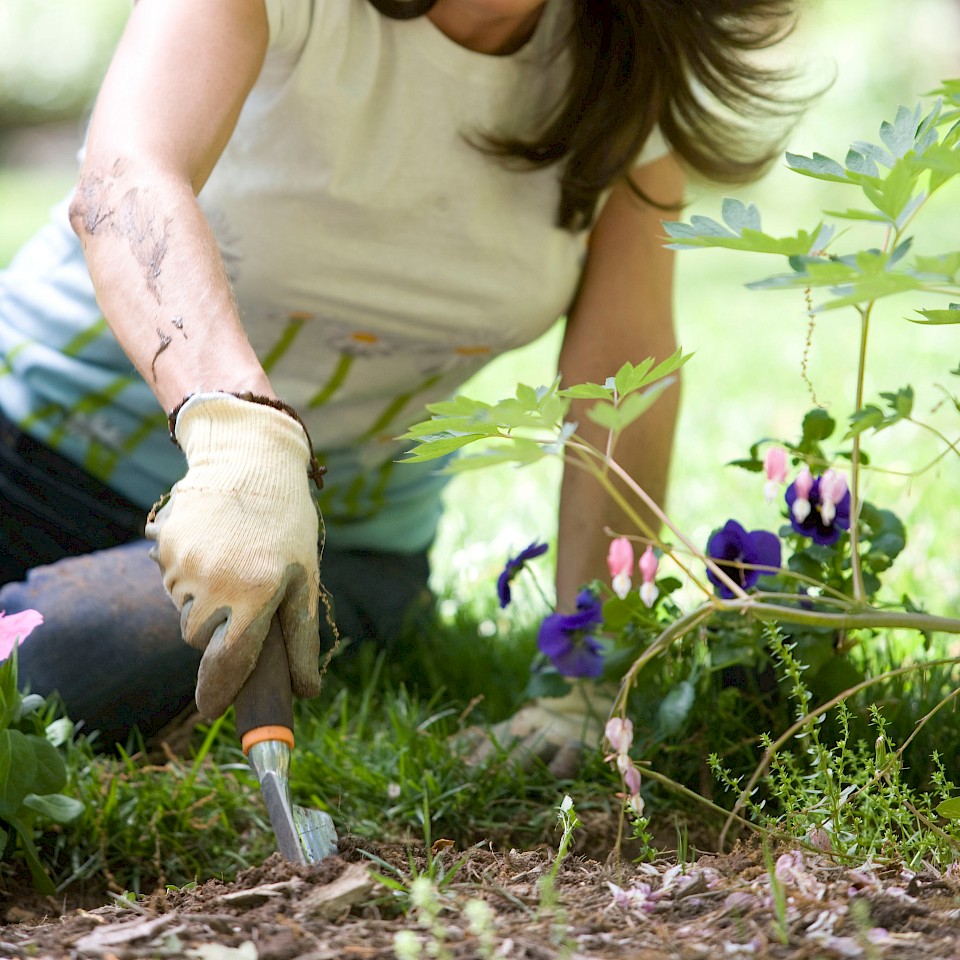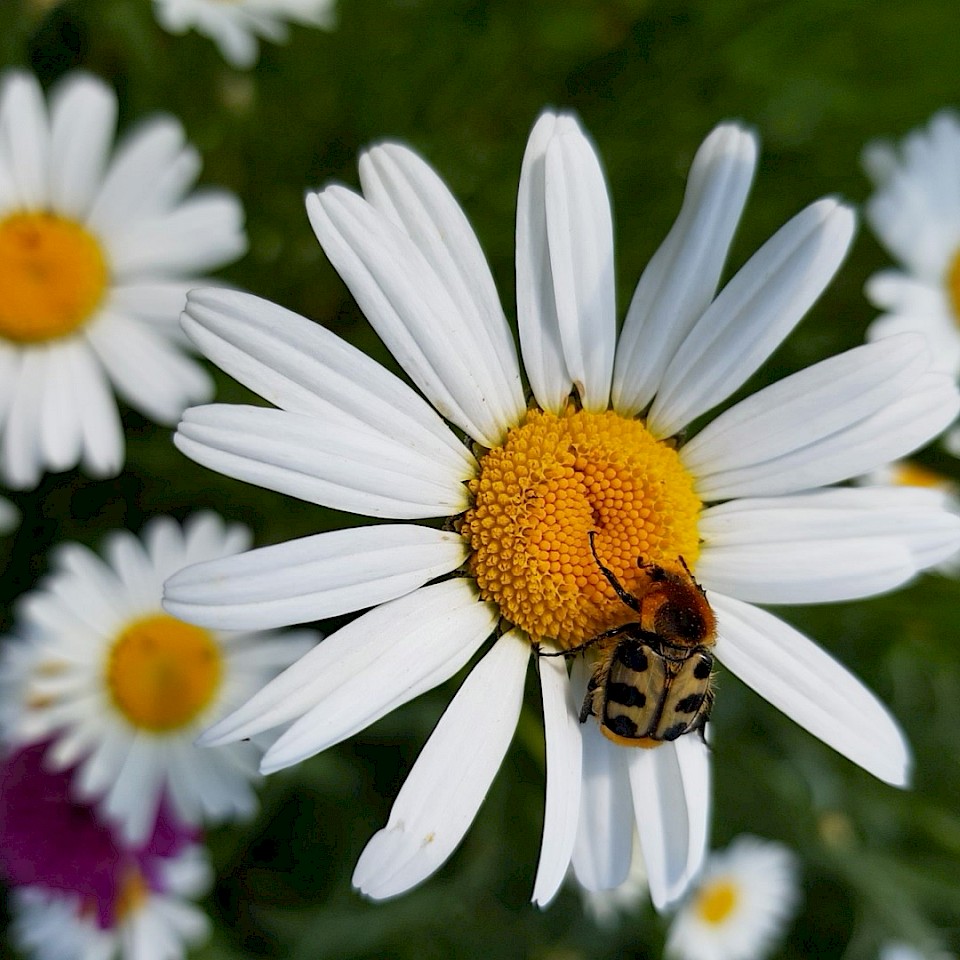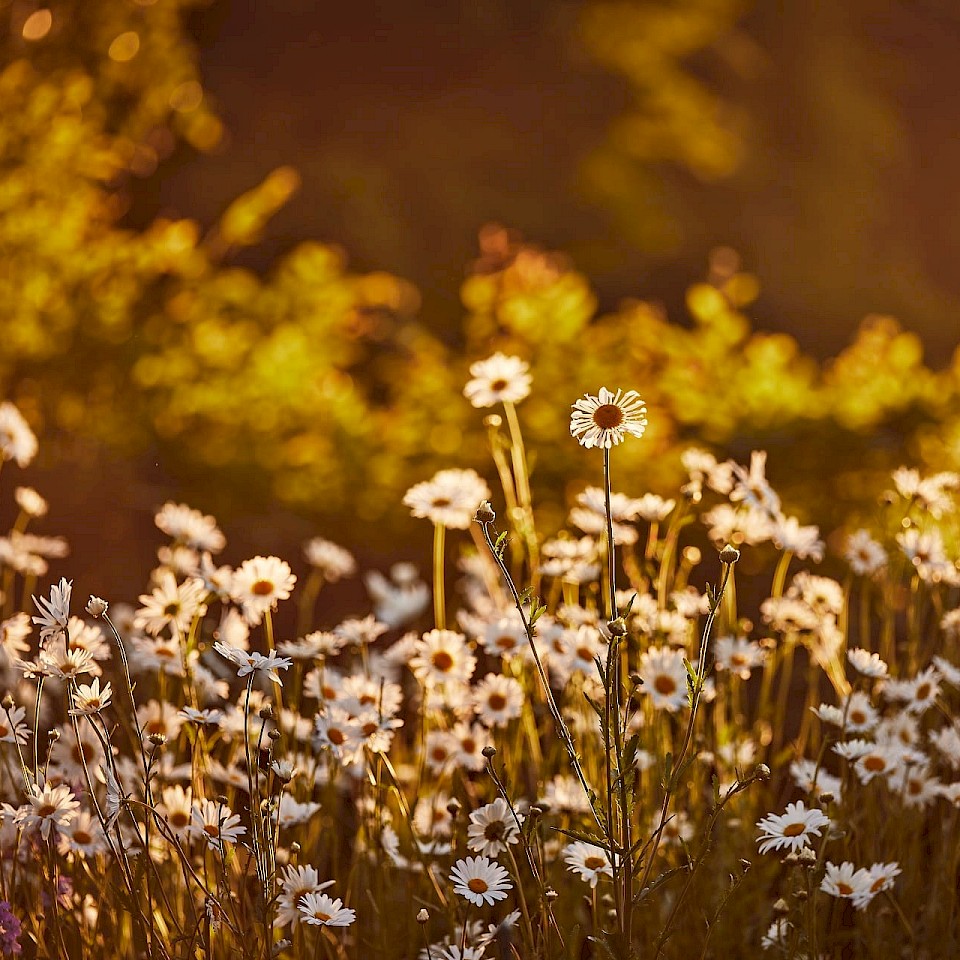The natural garden
A paradise for insects, birds and people
A near-natural garden provides habitats for a wide variety of animals. A natural garden consists mainly of native wild plants and favours a near-natural design. For example, plant stems are left standing and the shrubs are allowed to retain their natural shape to a large extent so that they provide food and nesting sites. The natural garden also uses as little plastic as possible. In this way, the natural garden protects the environment and is home to many native wild plants and animals.
Wild bees, bumblebees and butterflies can find food in insect-friendly perennials such as stonecrop, catmint, ox tongue, pasque flower and mullein. Herbs such as thyme, rosemary and sage are also an excellent addition.
Wildflowers, hedges, fruit trees
A colourful wildflower meadow is not only pleasing to the eye, but also to insects, caterpillars and beetles. Here, care should be taken to use native varieties. Here you will find, for example, corn poppy, cornflower, glueweed, daisies, marguerites, common piglet weed, meadow bluebells, meadow sorrel, red clover, horned clover, common sharpshank, viper 's bugloss or wild carrot.
The Sal willow as well as fruit trees and berry bush es are another great added value for your garden and the animals. With a hedge of hawthorn or wild roses you create a living garden fence where songbirds nest and seek shelter.
You can design a nature garden according to your own individual taste. Of course you can invest a lot of time and work, but you can also achieve a lot with small measures.
Let yourself be inspired
Shelter for animals
Insect hotels, nesting boxes, hedgehog houses as well as woody plants or leaf litter provide suitable shelter for the animals. Just leave a pile of deadwood and observe how many animals cavort here.
Dry stone walls also provide a suitable shelter for various animal species, such as the sand lizard, but also toads and bumblebees. Birds find food here. Wall gap plants, such as sand carnations and heath carnations, can also be planted here excellently.
A garden pond is not only an idyllic element in your garden, but also improves the microclimate and provides a habitat for insects, amphibians, lizards and birds.
Even with small steps you can reach your goal:
- Let part of the lawn grow.
- Create grass-free areas and sow them with wildflowers and native wild plants.
- Or wait and see which plants take over.
- Leave plant stems as food and nesting sites.
- Give the garden a chance to develop on its own.
And if you want more:
- Ponds, wetlands or dry stone walls create completely new habitats.
- Be creative and work with existing materials such as demolition stones or bricks, tree roots or branches.
- A herb bed or strawberry plants will also attract insects.
Want to learn more? Then read the interview with NABU Münster's nature garden group!
You want to turn your garden into a nature garden, but don't know how? In Münsterland there are many experts who deal with this topic. One of them is the garden and landscape builder Werner Krzizok.
Contact:
Garten-und Landschaftsbau Everswinkel
Werner Krzizok
Schuter 21
48351 Everswinkel
Phone: 02582 - 1784
E-mail: krzizok@t-online.de
Further information on this topic can also be found here:
Nabu brochure: Gartenlust - For More Nature in the Garden
Brochure of the Nature and Environmental Protection Academy NRW: Nature Garden in Practice
Flyer of the Nature and Environmental Protection Academy NRW: Flowering diversity in the front garden















